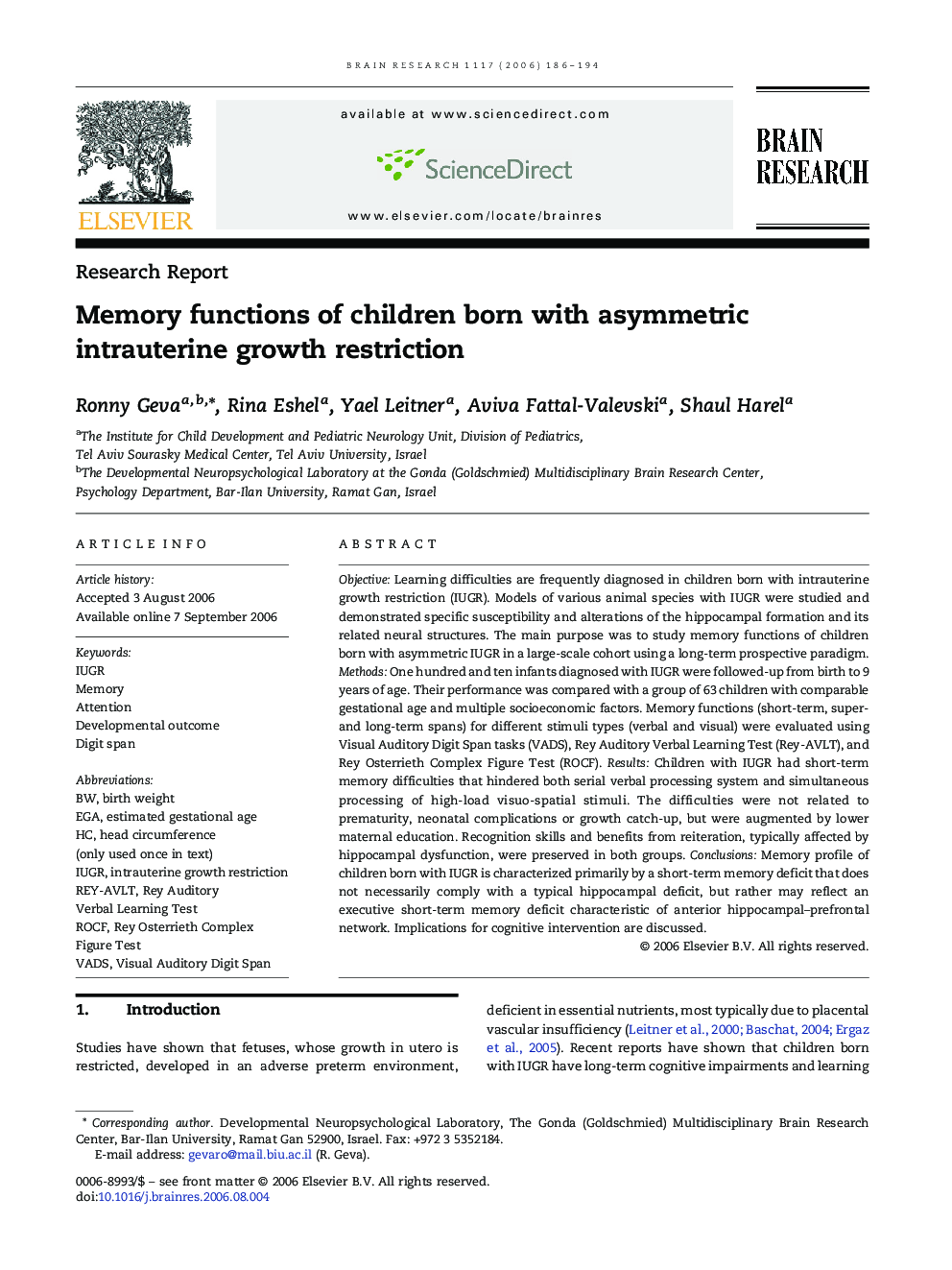| Article ID | Journal | Published Year | Pages | File Type |
|---|---|---|---|---|
| 4332177 | Brain Research | 2006 | 9 Pages |
Objective: Learning difficulties are frequently diagnosed in children born with intrauterine growth restriction (IUGR). Models of various animal species with IUGR were studied and demonstrated specific susceptibility and alterations of the hippocampal formation and its related neural structures. The main purpose was to study memory functions of children born with asymmetric IUGR in a large-scale cohort using a long-term prospective paradigm.Methods: One hundred and ten infants diagnosed with IUGR were followed-up from birth to 9 years of age. Their performance was compared with a group of 63 children with comparable gestational age and multiple socioeconomic factors. Memory functions (short-term, super- and long-term spans) for different stimuli types (verbal and visual) were evaluated using Visual Auditory Digit Span tasks (VADS), Rey Auditory Verbal Learning Test (Rey-AVLT), and Rey Osterrieth Complex Figure Test (ROCF). Results: Children with IUGR had short-term memory difficulties that hindered both serial verbal processing system and simultaneous processing of high-load visuo-spatial stimuli. The difficulties were not related to prematurity, neonatal complications or growth catch-up, but were augmented by lower maternal education. Recognition skills and benefits from reiteration, typically affected by hippocampal dysfunction, were preserved in both groups. Conclusions: Memory profile of children born with IUGR is characterized primarily by a short-term memory deficit that does not necessarily comply with a typical hippocampal deficit, but rather may reflect an executive short-term memory deficit characteristic of anterior hippocampal–prefrontal network. Implications for cognitive intervention are discussed.
